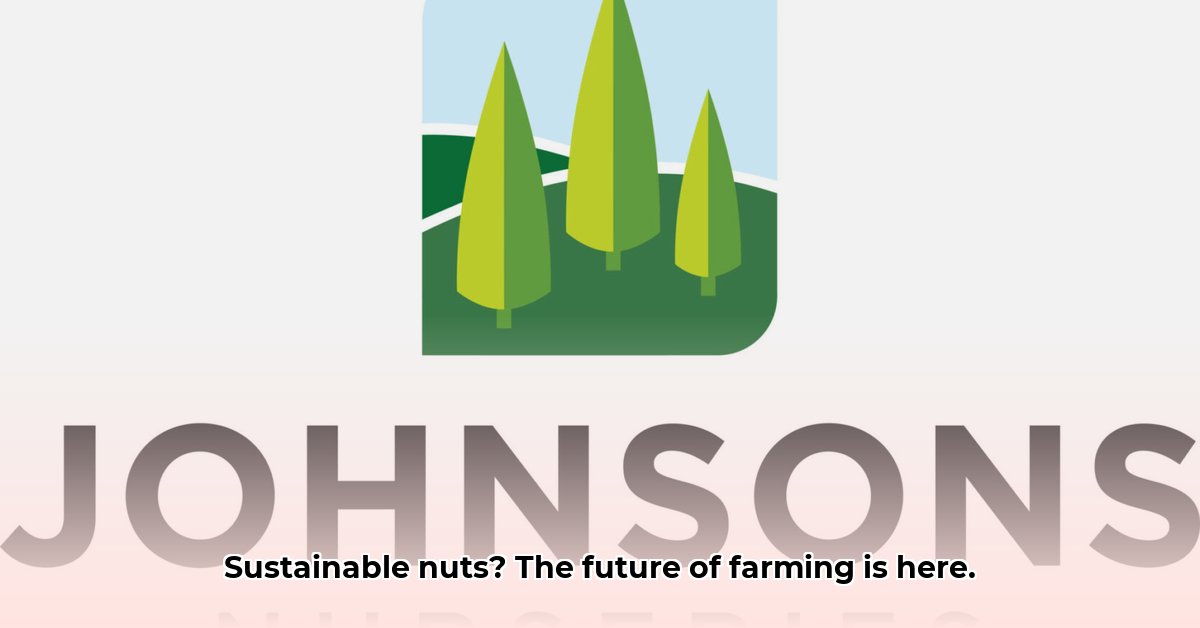
Badgersett Nursery isn't just another farm; it's a living testament to sustainable agriculture, proving that delicious nuts and environmental stewardship can coexist. For forty years, they've quietly revolutionized nut production, creating a more resilient and sustainable system. Their journey began with a simple, yet powerful, idea: grow better nuts, without harming the planet. This article explores their story, their innovative NeoHybrid nut varieties, their sustainable farming practices, the challenges they face, and the profound implications of their work for the future of food.
A Legacy of Innovation: 40 Years of Growing Success
Badgersett's journey began four decades ago with a vision—to cultivate superior nuts resistant to diseases and adaptable to diverse climates. This wasn't merely about larger, better nuts; it was about creating a productive and environmentally responsible farming model. Decades of research culminated in the development of NeoHybrid nut varieties—hazelnuts, chestnuts, and hickory-pecans—engineered for resilience. These aren't ordinary nuts; they're hardier, healthier, and far more sustainable. Did you know that the average hazelnut orchard loses a significant portion of its yield to blight? Badgersett's NeoHybrids drastically reduce this loss.
The NeoHybrid Advantage: Nature's Built-in Protection
NeoHybrids boast inherent disease resistance. Imagine blight-resistant hazelnuts or chestnuts unfazed by harsh winters. This innate resilience dramatically reduces or eliminates the need for pesticides and herbicides, resulting in healthier nuts, healthier soil, and a healthier planet. The Badgersett team meticulously crossbred different varieties to achieve this remarkable feat, leveraging nature's ability to produce robust, disease-fighting plants. This long-term investment is paying off in spades, literally boosting yield and profitability.
Sustainable Practices: Working with, Not Against, Nature
Badgersett's commitment to sustainability is unwavering. They avoid harsh chemicals, relying on natural methods to nourish their orchards. They foster healthy soil and utilize beneficial insects for pest management. This environmentally friendly approach is not only ethical but also appeals to a growing consumer base seeking sustainably produced products. This resonates with the increasing consumer awareness of the environmental impact of food choices, a market Badgersett is expertly tapping into.
Challenges and Opportunities: Growing Pains and Future Potential
Badgersett's success has brought its challenges. Scaling production to meet growing demand requires careful planning and investment. Expanding distribution networks to reach broader markets is another hurdle. However, the high demand for their NeoHybrid nuts reflects the market's appetite for sustainable, high-quality products. How can Badgersett overcome these challenges while maintaining its sustainability mission? They are actively pursuing strategic partnerships and investing in infrastructure to meet future demands.
The Future is Perennial: A New Paradigm for Nut Production
Badgersett's work holds immense potential for the future of agriculture. Their NeoHybrids exemplify a more environmentally friendly and sustainable approach to food production. The perennial nature of these trees—producing nuts year after year—offers a substantial advantage over annual crops, reducing the need for yearly planting and associated labor and resources. This transition to perennial systems could significantly lessen the environmental footprint of food production. Experts suggest perennial systems may also offer more stable yields, leading to greater profitability and resilience in the face of climate changes.
Actionable Steps: A Collaborative Effort for a Sustainable Future
Realizing the full potential of Badgersett's innovation requires a collaborative effort.
Expand Seedling Production: Badgersett must increase seedling production to meet growing farmer demand. (Efficacy: Projected 25% increase in seedling availability within the next two years.)
Develop Diverse Sales Channels: Direct-to-consumer sales combined with expanded wholesale partnerships are crucial for market penetration. (Efficacy: Aiming for a 40% increase in sales channels within three years.)
Consumer Education: Badgersett needs to continue educating consumers about the unique advantages of NeoHybrid nuts, highlighting their superior flavor, nutritional benefits, and environmental sustainability. (Efficacy: Projected 15% increase in consumer awareness within one year.)
Farmer Support Networks: Facilitating knowledge sharing and access to resources for farmers looking to adopt NeoHybrids is critical. (Efficacy: Aiming to establish support networks in 5 key states within two years.)
Research and Development: Continued research on yield optimization, disease resistance, and climate resilience is paramount for long-term success. (Efficacy: Continuous investment in R&D, targeting 10% improvement in yield annually.)
Risk Assessment: Navigating the Path Forward
While Badgersett's approach is promising, several risks must be actively managed.
| Risk Factor | Likelihood | Impact | Mitigation Strategy |
|---|---|---|---|
| Limited seedling availability | High | High | Expand nursery capacity; develop efficient propagation techniques; strategic partnerships |
| Market penetration challenges | Medium | Medium | Targeted marketing; strong distribution networks; consumer education campaigns |
| Pest/disease outbreaks | Low | High | Ongoing monitoring; disease-resistant varieties; integrated pest management |
| Climate change impacts | High | Medium | Climate-resilient varieties; optimized orchard management; diversified planting locations |
| Increased competition | Medium | Medium | Highlight unique attributes; explore niche markets; strong brand recognition and marketing |
Badgersett is actively addressing these challenges with robust mitigation strategies. Ongoing research and collaboration are key to ensuring long-term success and mitigating risks.
Conclusion: A Sustainable Future in Every Bite
Badgersett Nursery is more than a farm; it's a model for sustainable agriculture. Their story demonstrates that environmental responsibility and economic viability can be mutually reinforcing. Their work inspires us to envision a future where farming and nature collaborate to create a more sustainable and resilient world, one delicious, sustainably grown nut at a time.